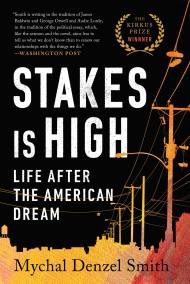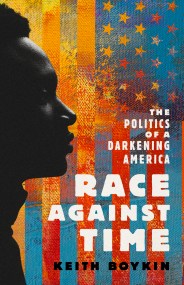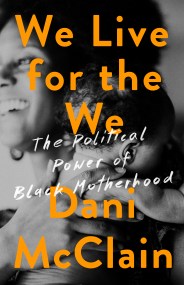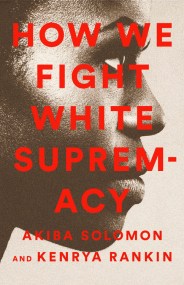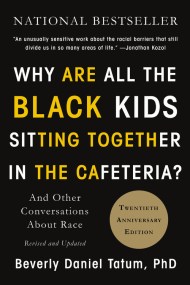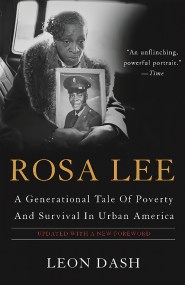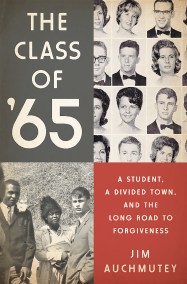Shopping Cart
Diversity, Inc.
The Failed Promise of a Billion-Dollar Business
Description
What's Inside
PREFACE
I have devoted a considerable portion of my life to journalism and higher education, both fields in which people of color are radically underrepresented. In three of four newsrooms, I was the only African American news reporter. I would later become one of two people of color on New York University’s tenure-track journalism faculty and for a time was one of the few tenured African American female professors on the entire faculty of the university’s Faculty of Arts and Science.
During more than three decades of my professional life, diversity has been a national preoccupation. Yet despite decades of handwringing, costly initiatives, and uncomfortable conversations, progress in most elite American institutions has been negligible. While racial/ethnic minorities make up roughly 38.8 percent of the national population, they comprise just 17 percent of full-time university professors, which includes faculty at Historically Black Colleges and Universities (HBCUs).1 Put another way, non-Hispanic Whites, who comprise roughly 61 percent of the population, hold 82 percent of full-time professorships. Hispanics and Blacks, who together encompass roughly 31 percent of the US population, are just 3 percent and 4 percent, respectively, of full-time professors.2Their numbers have barely budged over the past few decades.3
The field of journalism has not fared much better. Four decades after the newspaper industry pledged to create newsrooms that reflect the proportion of minorities in the population by the year 2000, they, too, remain disproportionately White. African Americans, Latinos, Asians, and Native Americans combined held 16.55 percent of newsroom jobs, based on the 2017 annual newsroom survey released by the American Society of News Editors.4 That number was even a slight decrease from the preceding year, and when online news sites were excluded, the percentage of minorities dropped to 16.3 percent.
The numbers in journalism and academia, like those in other influential fields—from the arts, advertising, and fashion to law, technology, and investment banking—defy the quickening pace of change in the nation’s racial demographics. In 2011, for the first time in America’s nearly 250-year history, more babies of color were born than non-Hispanic Whites. Since 2010, non-Hispanic Whites have been the minority in twenty-two of the nation’s one hundred largest metropolitan areas, and the US Census Bureau projects that by 2045 they will no longer constitute a national majority—which has made diversity one of the buzzwords of the twenty-first century. But why, after five decades of countless studies, public pledges, and high-profile initiatives, is diversity lagging in most elite fields? And why do many White Americans believe that racial progress has been much better than the numbers suggest?
Our current diversity conversation began in 1968, when President Lyndon Johnson’s National Advisory Commission on Civil Disorders recommended the inclusion of African Americans in institutions that had historically excluded them. The Kerner Commission, as it came to be known, highlighted the need to address the shameful legacy of slavery and Jim Crow. It overlooked, however, the haunting invisibility of Native Americans, an estimated 90 percent of whom were killed by disease and war in the wake of European settlement. Native Americans and Alaskan Natives, including those of more than one race, number around 6.7 million, or 2 percent of the population.5 Regrettably, given their small numbers, they barely register in much of the data.
Since 1968, diversity, of course, has been expanded to encompass other racial and ethnic minorities along with women, people with physical and mental disabilities, LGBTQIA individuals, and other marginalized populations. However, given the issues unique to each distinct group and the ways in which the plight of racial minorities in general and African Americans in particular have been overshadowed by other categories within this overtaxed term, this book will specifically address the progress the nation has made toward racial diversity.
Race, of course, is a complicated and often-imprecise designation that in the United States has always relied less on ancestry than on appearance. Those who most resemble what is considered White are generally accorded greater status. It’s a messy social construction that nonetheless matters when trying to sense the texture of American life for distinct segments of the population. But it is challenging, given the shifting terrain. The classification of Hispanic/Latinx connotes ethnicity and not race, which could range from Black to White. And given the invisibility of Native Americans in most metrics and the ascendance of Asians in STEM fields and in income earning, there is no way to paint a complete portrait of America’s complex racial landscape. Further clouding the picture, Asians—who encompass a broad spectrum of people, cultures, and languages across a continent—are, relative to their numbers in the general population, either disproportionately over- or underrepresented, depending on the field.
To examine the nation’s progress toward racial diversity, I focus on the three largest racial/ethnic minority groups: Hispanics/Latinx, African Americans/Black, and Asian Americans. I alternately use African American or Black and Hispanic for the sake of clarity, even though the terminology in the data I cite varies. Encompassed within race and ethnicity are, of course, all the other classifications—including physical and cognitive disability, gender, and sexual orientation—that become doubly or triply burdened by interlocking systems of discrimination. Still, a half century after Kerner, the Black-White divide is still most palpable in American life; the stark disparities between the two groups remain the most telling indicators of America’s racial breach. However, the expansion of America’s racial tableau and the long history of discriminatory federal policies and attitudes directed at other Americans considered non-White require an examination of efforts to fold racial and ethnic minorities into the mainframe of the nation. America, despite the presence and contributions of many, remains—at least in the public imagination and in most realms of influence—dominated by Whiteness.
I explore diversity across numerous fields but pay sustained attention to three fields in particular: academia, Hollywood, and corporate America—each of which has publicly and privately grappled with the issue over the past five decades. They are among the fields whose leaders have in recent years renewed their commitment to diversity, collectively pledging billions of dollars to commission studies, set up training sessions, and hire consultants and czars to oversee diversity programs. These efforts have, among other things, shored up a multibillion-dollar industry, expanding opportunities for an ever-growing number of law firms, consultants, and senior-level executives. It’s impossible to understand diversity without exploring the big business of it, the tension between the rhetoric and expenditures, and the chronically disappointing results. In recent years, organizations have begun to use the term diversity and inclusion to underscore the need for compositional diversity and institutional belonging. Unless otherwise indicated, the word diversity will imply both.
In examining the data and conversing with scores of people on the front line of the movement for change, I discovered some of the reasons why, despite decades of deliberation and multibillion-dollar initiatives, many are still pondering and gesturing rather than meaningfully increasing diversity. Perhaps most surprising is that many of the fields that are considered the most progressive, such as the arts and entertainment, are the least diverse and that corporate America—despite remaining challenges—has in many instances made far greater strides toward employing and promoting racial minorities.
The plodding pace of change a half century later makes clear the need to reframe the diversity conversation of recent years from a rosy we-are-the-world ideal to one fired by a mission to combat systemic racial injustice and pervasive delusion about where we stand. Our current predicament is part and parcel of an enduring ideology of White preeminence and the callous resolve that America’s global ascent justified the means by which African Americans, Native Americans, and others were ruthlessly exploited. This ethos permeates mass media, so-called high art, the Western literary canon, and our criminal justice and educational systems. The dismal numbers reported year after year are a predictable outcome of this morally impoverished calculus. Unless and until White America—including those who claim progressive values—comes to terms with its complicity in persisting injustice, diversity initiatives will continually fail. Since one’s complicity can be willful or stem from benign ignorance and neglect, the latter affords the potential—if not the promise—of serious reflection and reform. The numbers are uninspiring, but the all-too-few examples of change offer a semblance of hope. They can serve as a beacon for those who are truly committed to justice. In the end, we will each be judged not by stated principles but by our achievements.
Given the sturdy foundation of White domination on which America rests, it has perhaps been naïve of many diversity advocates to expect even those viewed as progressive allies to relinquish hardwired attitudes and centuries-old customs, no matter how ignobly attained. Many believed that if only they could show the inherent injustice of institutional bias and the ways in which it perpetuates inequality and fuels racial conflict, then attitudes—and workplaces—would substantially change. Five decades later, diversity proponents can be forgiven their idealism, if not their fidelity to ineffective approaches.
Allies and advocates of diversity—including those who are beneficiaries of the burgeoning industry it has spawned—must also change course lest they become complicit with those who consciously or unconsciously work to sustain the status quo. In their work they might ask whether they unwittingly serve as smokescreens rather than true agents of change. How might they enable evasion and resistance by the institutions they serve? At what point does it become apparent that institutions they associate with are less committed to diversity than their rhetoric, commissioned task forces, studies, and appointed diversity officers suggest?
How do we as a society gauge success, and at what point is it safe to assume that some of the best efforts are in vain? And what can be done differently to foster change?
Diversity, Inc. inspires indelicate questions and sober reflection. In an increasingly multiracial nation, who will set the course for the nation’s identity and destiny? In a nation that has—as a result of political and numerical dominance—largely been defined by Whiteness, what would a truly diverse society mean culturally, politically, spiritually, economically, and psychologically for White Americans? What would it mean for America?
CHAPTER
1
DIVERSITY AND DISCONTENT
“Race prejudice has shaped our history decisively; it now threatens to affect our future.”
—Report of the National Advisory Commission on Civil Disorders, 1968
Clarence Otis Jr. was nine years old when in 1965 an uprising in his Watts neighborhood helped the embers of unrest that for the rest of the 1960s swept through Black urban America. Nearly five decades later, Otis—who in 2004 became one of the nation’s seven Black Fortune 500 CEOs when he was tapped to lead Darden Restaurants—credits the aftermath of that upheaval for his future success.
In 1967, Johnson, in response to the spiraling turmoil, empaneled the National Advisory Commission of Civil Disorders, which, a year later, in a blistering report, largely blamed White racism and indifference for the despair plaguing African Americans. A century after emancipation, it called on leaders of American institutions to address “pervasive discrimination in employment, education and housing which has resulted in the continuing exclusion of great numbers of Negroes from the benefit of economic progress.”1 The report cast in stark relief White America’s systematic exclusion of Blacks from decent housing and education and positions in trades and professions, including news media, Hollywood, and corporate America.
Johnson had already laid out his ambitious vision for a more racially just and inclusive nation in the early months of his presidency. In a 1964 speech at the University of Michigan, Johnson said that a Great Society “rests on abundance and liberty for all. It demands an end to poverty and racial injustice.” In a nation flush with prosperity, some thirty-six million Americans, nearly three-quarters of whom were children and senior citizens, were living below the poverty line.
He quickly ushered in sweeping legislation, including the Civil Rights Act of 1964, to outlaw discrimination in public accommodations and federally funded facilities, and the Voting Rights Act of 1965, which forbade literacy tests and other measures that had prevented southern Blacks from voting. The 1965 Higher Education Act made work study, federal grants, and low-interest loans for college making it more accessible to the poor and working class. Medicare, Medicaid, food stamps, and the 1966 Child Nutrition Act brought health care and greater food security to the poor and elderly. Jobs Corps established skills training and temporary employment; and Head Start, as its name implied, offered early education along with medical and dental care to level the playing field for poor children.
Johnson moved quickly to enforce the new laws targeting injustice. He substantially increased federal funding for hospitals and schools, then used those funds as a lever to ensure compliance with Title VI of the Civil Rights Act forbidding discrimination based on race, color, or religion in public accommodations and facilities that received federal funding. He dispatched inspectors to schools and hospitals across the South to monitor compliance.
As Joshua Zeitz, author of Building the Great Society, said, the results were “astonishing.”
Between 1965 and 1968, he said the number of Black students in the South who attended better-resourced majority-White schools rose from roughly 2.3 percent to almost 23.4 percent and peaked at 43.5 percent in 1988. Between 1968 and 1980, the portion of southern Black children attending schools where they made up more than 90 percent of the student population declined from 77.5 percent to 26.5 percent.
Moreover, by 1964, just 26 percent of Blacks attained a high school diploma, but within a decade the percentage had increased to 41 percent. By 2017, 87 percent of Blacks age twenty-five and older had attained a high school diploma, nearly closing the gap with Whites, whose rate stood at 93 percent.2 While similar numbers are not available for other racial groups during the early years of the Civil Rights Movement, between 1964 and 1984, the gap between Blacks and Whites closed from 24 points to 16 points.
Hospitals, nursing homes, and other facilities that received federal funding were also desegregated under the watchful eye of inspectors. Facilities found out of compliance were ineligible to accept Medicare and Medicaid, which became law in 1965.
Following passage of the Voting Rights Act, federal examiners swept into Alabama, Louisiana, Mississippi, and Georgia, where by the following January some ninety thousand voters were added to the rolls. By 1970, about 66 percent of African Americans in the Deep South were registered, and most were able to vote.
While the Civil Rights Movement turned the spotlight on southern bigotry, the urban riots highlighted the persistence of northern discrimination that kept Blacks in overcrowded, under-resourced neighborhoods and excluded them from most professions and unions. By the end of the 1960s, many doors that had long been closed to urban Blacks were suddenly pried open.
“We were beneficiaries of the Great Society,” said Otis, one of four children reared by a janitor and homemaker. Otis and his siblings took advantage of programs such as the Neighborhood Youth Corp, a federally funded program that created jobs for urban teens, and the Watts Town Arts Center, which brought recreation and culture to his segregated and economically fragile neighborhood.
“We got a head start,” Otis said. “It definitely mattered during that era.”3
Otis graduated among the top one hundred of seven hundred students in Los Angeles’s predominantly Black David Starr Jordan High School, most of whom attended college—in his case the prestigious Williams College, from which he graduated magna cum laude. He went on to Stanford Law School and by age thirty was a vice president at First Boston Corporation. In 1995, he was recruited to Darden—the restaurant group that included Red Lobster and Olive Garden. He continued to move up the ladder, becoming chairman and CEO nine years later. Under his leadership, share prices nearly tripled, and Darden, with 185,000 employees and two thousand outlets, ranked as the largest full-service restaurant operation in the world.4 During the last four years of his tenure, Fortune magazine listed Darden as one of the top companies to work for.
Otis assembled a senior leadership team that was 41 percent of color. “When you have these kind of senior leadership numbers it becomes easier to make diversity a priority in everything you do—from hiring and talent management (development and promotion) to culture building to how you think about and treat customers,” he said.5
But in recent years diversity in many American industries has stalled and in some instances is in retreat. Otis stepped down in 2014, and with the retirement in 2018 of Kenneth Chenault as CEO of American Express, the number of Black Fortune 500 CEOs has decreased to three. African Americans, who comprise roughly 13 percent of the US population, are fewer than 1 percent of Fortune 500 CEOs. Just under 4.5 percent of Fortune 500 CEOs are Black, Hispanic, or Asian. People of color hold about 16 percent of Fortune 500 board seats.6
“The fact that we’re in this situation is, I think, a real problem and embarrassing for corporate America,” Chenault said before stepping down.7 “One of the biggest issues for our society is diversity and inclusion. We should have far more representation.”
The numbers are telling. Between 2009 and 2018, the percentage of Black law partners has inched up from 1.7 to 1.8 percent. People of color comprise 9 percent of law firm partners, compared to 71 percent who are White male, and 20 percent women, according to the National Association for Law Placement. Between 1985 and 2016, the proportion of Black men in management at all US companies with one hundred or more employees barely budged, from 3 percent to 3.2 percent.8
So a half century after Johnson’s clarion call for African American inclusion in the mainstream of American life, they and other racial minorities remain strikingly underrepresented in most elite fields, particularly in management. While Johnson’s programs and policies have begun to bear fruit, he may have underestimated the depth of White resistance to full racial equality. While northern Whites had supported civil rights legislation aimed at the South, they resisted efforts to integrate schools and housing closer to home. In 1966, legislation barring discrimination in the sale and rental of housing sparked a vehement backlash and ultimately failed. That year, Rev. Martin Luther King Jr., who had been felled by a rock during a demonstration in Chicago, remarked, “I think the people of Mississippi ought to come to Chicago to learn how to hate.”9
Johnson’s transformative vision became a target for conservative politicians from Ronald Reagan to Paul Ryan, who worked tirelessly to dismantle key programs and policies that had begun to disrupt generational poverty and had created long-denied opportunity for African Americans and other disadvantaged groups for a quality education and gainful employment.
In White Rage, historian Carol Anderson recounts how Black unemployment had sharply declined during the 1960s and 1970s, nearly closing the racial gap. However, under the Reagan administration, federal jobs and programs that had aided that progress were cut, causing Black unemployment to skyrocket to 15.5 percent—the highest it had been since the Great Depression. Black youth employment rose to 45.7 percent.
“At this point Reagan chose to slash the training, employment and labor services budget by 70 percent—a cut of $3.895 billion,” Anderson wrote, causing college enrollment among African Americans to tumble from 34 to 26 percent.
“Thus, just at the moment when the post-industrial economy made an undergraduate degree more important than ever, 15,000 fewer African Americans were in college during the early 1980s than had been the case in the mid 1970s,” she wrote.10
Today, many school districts are as segregated as they were in the 1950s when Brown v. Board of Education deemed segregated schools unconstitutional. Millions of Black and Brown children are condemned to overcrowded, under-resourced schools in neighborhoods that Great Society programs were attempting, with demonstrable success, to address.
Reaganesque ideology has helped fuel a never-ending series of legal challenges of any measures intended to create opportunity that laws and racial custom has historically denied Blacks and now other non-Whites.
The recurring obstruction of Black advancement dates back to the Reconstruction era when measures to make amends for centuries of slavery were met with racial terrorism and Black Codes, a series of laws passed in southern states that for another century blatantly denied Blacks their constitutional rights. Today, any attempt at racial redress is predictably met with legal challenges. The examples are numerous and, by now, expected. Legions of Whites, from Allan Bakke in 1978 to Abigail Fisher in 2013 and 2016, have made the claim of reverse discrimination to undermine policies that aim to create opportunities for those who, by design, were historically left out. In 2019, Mark Perry, a White economics professor at the University of Michigan, filed a complaint with the Department of Education Office for Civil Rights against Wayne State University for hosting a summer workshop for the not-for-profit group Black Girls Code. The organization seeks to address the acute underrepresentation of Black women in the burgeoning tech industry. Perry had reportedly filed more than thirty similar complaints challenging gender discrimination across the country. However, his latest effort threatened to undercut efforts to expand opportunity for one of society’s most economically disadvantaged groups.
The sluggish pace of change has in recent years sparked claims of institutional soul-searching and a renewed commitment to diversity. In 2017, a group of global CEOs launched CEO Action for Diversity and Inclusion; more than five hundred business leaders publicly pledged to advance diversity and inclusion in the workplace. In 2018, the law firm Shearman & Sterling was among the prestigious global outfits to hire its first-ever chief diversity officer and establish a task force to increase diversity.
The Ford Foundation is betting the farm on its ability to help diversify American institutions, throwing the full weight of its more than half-billion dollars in annual grants toward initiatives that promote equality. “Progress won’t come without us being uncomfortable,” Darren Walker, the foundation president, said. “People want to believe we can have diversity and not really get uncomfortable… It requires incumbent leaders and managers to change their behavior and practices. It means that institutions have to change incentive structures and to fundamentally interrogate their own behavior, which is very uncomfortable.”11
But therein lies the problem. There’s little evidence that many are inclined to accept that challenge. Leaders in numerous fields have for decades stated their commitment to diversity, but recent employment data invite scrutiny of their efforts. Especially revealing is the significant underrepresentation of people of color in some of the fields often touted among the most progressive, including the arts, journalism, academia, fashion, and the film industry. As Walker said, much of the answer lies in overcoming the sense that racial inequality and discrimination have been overcome. “The challenge in the progressive community is benign neglect; benign validation,” states Walker. “When you look behind the curtain, the emperor has no clothes.”12
In 2015, an art museum demographic survey commissioned by the Andrew W. Mellon Foundation found that 84 percent of museum curator, conservator, educator, and leadership positions were held by non-Hispanic Whites, with 6 percent Asian, 4 percent African American, 3 percent Hispanic White, and 3 percent two or more races. Racial minorities were most often employed as museum security guards. “The case is clear and urgent,” Mariët Westermann, vice president of the Mellon Foundation, wrote in the report’s introduction. “Constructive responses to it will be critical to the continued vitality of art museums as public resources for a democratic society.”13However, that same year, Samantha Niemann, a White student denied a Getty Foundation internship created to address the dearth of racial minorities in museums, filed a lawsuit charging discrimination. A 2018 Mellon survey indicated the numbers of people of color in leadership remained small.
Sixteen years after installation artist Fred Wilson was awarded the MacArthur Fellowship, known as the “Genius Grant,” for work highlighting biased museum practices, art world professionals in 2015 formed the Museums and Race organization “to challenge and reimagine institutional policies and systems that perpetuate oppression in museums.”14 The group seeks to address the lack of diversity on museum boards and staffs and among its collections, members, and visitors.
At every turn, purportedly liberal and elite sectors maintain racial custom and tradition in their hiring until they are publicly shamed or otherwise coerced into widening access to people of color. In New York City, Mayor Bill de Blasio made waves when he announced that the city would use city funding as a hammer to pressure cultural organizations to diversify their overwhelmingly White boards. In New York City, where the population is 32 percent White, its cultural workforce is nearly double that, with leadership decidedly Whiter. The city also pledged $1 million to subsidize diversity programs at its cultural institutions. Similar efforts are under way in cities across the country.



